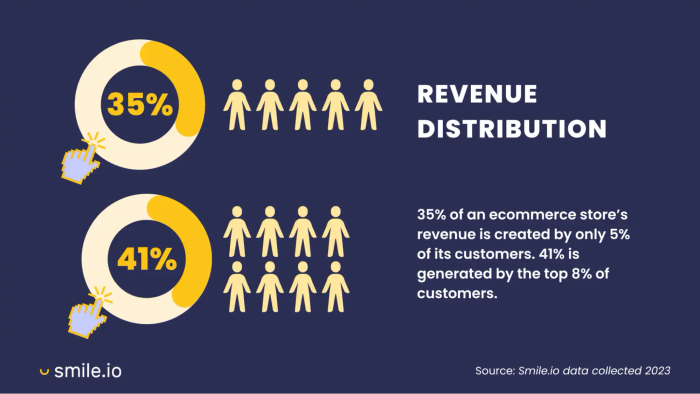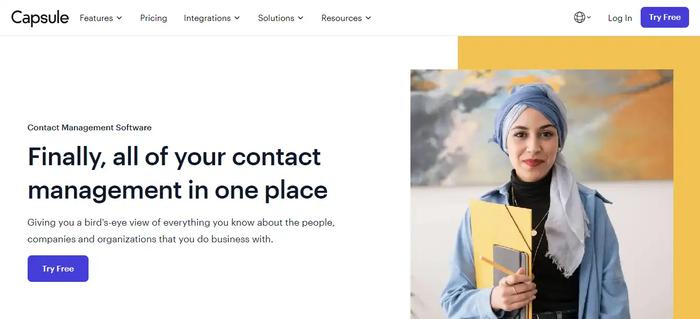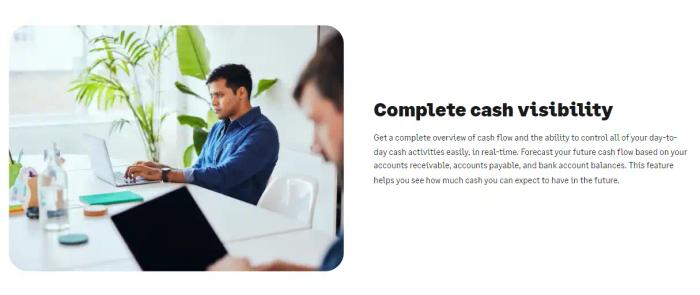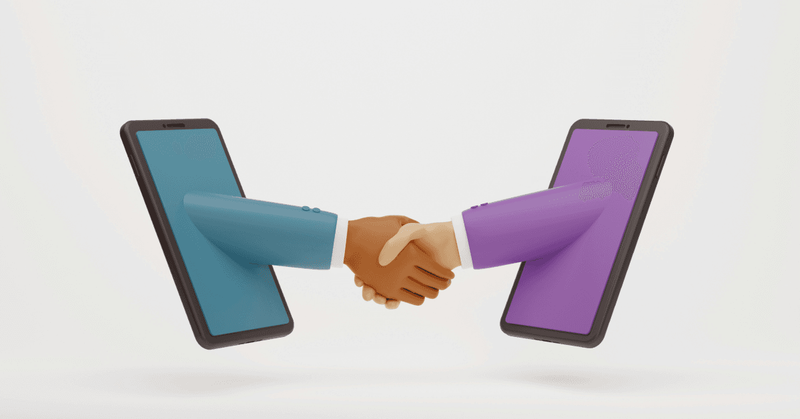We all know just how important it is to build positive customer relationships. But what sets a relationship selling strategy apart is its hyper-focus on forming deep human connections with customers. These buyer-seller relationships are mutually beneficial, leading to long-term trust and loyalty.
Chances are, you’re already performing relationship selling to some degree. But how can you leverage it to truly enhance your sales performance and drive more loyalty and revenue for your business?
Here, we’ll take you through all of this and more. But first, let’s take a look at what a relationship-selling strategy is and see how it can benefit you.
What is relationship selling?
Relationship selling is a sales tactic that prioritizes establishing a personal connection with prospects. Rather than trying to make a quick sale, relationship selling uses sales activities that develop long-term trust between the seller and the customer.

For example, personalizing payment terms or checking in with customers post-purchase are examples of a relationship-selling strategy in action. But at its core, relationship selling aims to build a genuine rapport with customers to win customer trust and nurture long-term loyalty.
Benefits of relationship selling
Why is relationship selling important and how can you leverage the benefits? Here’s how relationship selling can enhance your sales strategy and boost business growth.
Increases cross-selling and upselling opportunities
Cross-selling and upselling are sales tactics commonly used at the point of purchase to increase order values. Cross-selling encourages customers to purchase a complementary or related product. Upselling invites customers to purchase the more expensive or upgraded version of the product.
Both tactics are undeniably profitable. Each strategy accounts for 21% of a company’s revenue according to Hubspot.
They’re most effective when used on customers who already have an established relationship with you, as these customers are more inclined to trust your recommendations. So, the more positive customer relationships you have, the more cross-selling and upselling opportunities you’ll gain.
Boosts customer lifetime value
Customer lifetime value (CLV) measures the revenue generated by a single customer throughout their relationship with your company. Customers with a high CLV are your most loyal and profitable customers. They make frequent, high-volume purchases and advocate for your brand.
In fact, Smile discovered that your top 5% of customers make up 35% of your revenue.

But these loyal customers don’t just come out of nowhere. They need to be nurtured using relationship-selling tactics.
Relationship selling focuses on creating genuine connections with your customers through personalized marketing, exclusive benefits, and exceptional customer service experiences. These activities are critical drivers of customer loyalty and boost your CLV. The higher your CLV, the better your sales performance.
Amplifies word-of-mouth marketing
Word-of-mouth marketing is the oldest form of marketing we have — and it’s by far the most reliable. This is because customers trust the recommendations of friends, family, and colleagues more than brand advertisements. They even trust online reviews left by strangers more than any of your corporate-created materials.
When customers find a brand they love, they want to tell the world. Relationship selling inspires customers to share their positive experiences on social media, write glowing reviews online, and communicate just how great you are to their friends, family, and colleagues.
Streamlines the sales cycle
The process you use to turn a prospective customer into a paying customer is known as your sales cycle. At every stage of the process — from acquiring and qualifying the lead to closing the deal and following up — you need to maintain consistent, positive customer relationships. If you drop the ball at any point, you risk losing a customer.
Relationship selling puts establishing a human connection before the transactional relationship. Utilizing strategies like personalization and transparent pricing, it aims to ensure that every touchpoint focuses on the customers' needs and challenges rather than the financial needs of your business.
This can accelerate your sales cycle, especially if used alongside a reliable customer relationship management (CRM) system.
How to leverage relationship selling
It’s no longer enough to just have a good product — you need to win your customers over on a personal level. This is even more vital for B2B companies, where trust, respect, and authenticity are essential to the final purchasing decision. So, how can you leverage relationship selling to enhance your sales performance?
Take a data-driven approach to grasp customer needs
In relationship selling strategies, data is your best friend. It provides the insights you need into your customers’ needs, goals, objectives, and challenges — ultimately, their motivators for buying.
Using a data-driven approach, you can verify that you’re approaching and qualifying the right customers and exerting your energy into building relationships with high-value prospects.
Your CRM system is one of your richest data sources. Collect and analyze detailed contact data: demographic information, browsing behaviors, purchasing history, and more, for insights into the wants, needs, and pain points of your customers.

Other data sources include website analytics, social media analytics, surveys and feedback forms.
Offer personalized financial solutions and incentives
Personalized financial solutions are tailored to meet the specific needs of each customer. This could come in the form of offering custom price plans or a range of packages priced to suit different budgets and requirements. Incentives and concessions also work well, such as offering a discount, tailoring the payment term, or agreeing to provide 24/7 customer service.
Show customers that you’re willing to meet their personal needs, and they’re more likely to repay you in kind by becoming repeat customers. Saying this, the personalized financial solutions you offer still need to be considered in alignment with your company’s financial means.
While it may be tempting to lowball your prices to win over a customer who’s teetering on the edge of conversion, this can result in significant loss.
Use Sage software for cash flow management to model different scenarios, including specific personalized financial solutions, and create better cash flow forecasts. This ensures that every deal and incentive you offer is financially viable. You can even integrate it with a point-of-sale (POS) system, like Square or Shopify, to get the most accurate and updated transactional sales data.

Provide transparent pricing and financial communication
A transparent pricing strategy ensures that your product pricing information — including any additional fees — is openly available and accessible to customers. It also communicates any variables influencing your pricing strategy, such as market or supply changes.
Transparent pricing enables customers to progress down the sales funnel faster, improving your sales performance. They can make quick, informed decisions without fearing being blinded by hidden charges. Open communication motivates trust and loyalty so that you can reap the benefits of repeat business and referrals.
Collect customer feedback and respond accordingly
So, your customer has signed their contract and/or made a purchase. But that’s not the end of their journey.
Relationship selling strategies recognize that to maintain your customers' business and loyalty, you need to remain attuned to their needs. 71% of customers have switched brands in the last year, citing better deals, products, and customer service as their main reasons for doing so.

Listening to and actioning feedback wins you the trust and loyalty of your existing customers, driving their repeat business. Beyond that, your customers’ feedback can highlight critical customer experience gaps and illuminate areas of improvement.
Let’s say that your customers express disappointment in how long they had to wait for their delivery to arrive. In response, you source the best order fulfillment software for shipping and delivery automation.
By using this software to streamline order fulfillment and provide customers with accurate, real-time delivery information and estimates, you can improve your customer journey as well as your customer relationships.
Conduct regular follow-ups and check-ins
Regularly following up and checking in with your existing customers is another way to build post-purchase relationships. It demonstrates that you value your customers' successes and not just their financial contributions. This helps you establish respectful, mutually beneficial relationships.
Follow up with customers at different stages of their post-purchase journey by:
- Sending a thank-you message.
- Asking whether your product is meeting their needs and inviting any feedback.
- Providing how-to guides and tutorials.
- Communicating any additional product value, such as newly-released features or updates.
- Gifting a freebie or exclusive deal.
- Sharing content that they might be interested in.
- Inviting them to events.
Celebrate customer milestones
Why not contact customers to celebrate specific milestones? For example, you could send a message commemorating the anniversary of their first purchase or loyalty program membership. Such gestures go a long way with customers as they personalize the experience and show that you appreciate them.
To win even more customer loyalty points, throw in a voucher or freebie, too. Customers are bound to tell their family and friends about their personalized customer experience with your brand, bringing in waves of new, high-value customers.
Facilitate networking opportunities
For B2B companies, relationship selling can unlock lucrative networking connections. This is because B2B sales are so heavily dependent on building relationships that foster trust and reliability as well as value. When clients find a company that meets these requirements, they’ll be keen to make referrals and connect you with their trusted contacts, opening the door to new opportunities.
Final thoughts
In theory, relationship selling is a simple sales technique that you can implement into your sales strategy tomorrow. That said, every sales leader knows that building authentic customer relationships can be a painstaking process.
Leverage relationship selling using the above strategies, such as adopting a data-driven approach, utilizing personalization, and welcoming feedback. Through consistent communication with customers and a willingness to meet their needs, closing more deals and nurturing long-term loyalty should be on the horizon.




